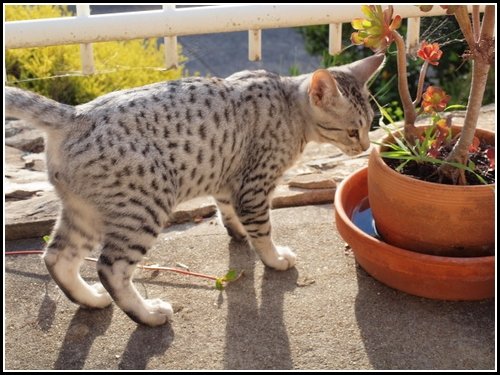

Residual ghost striping or " barring" can often be seen on the lower legs, face and belly and sometimes at the tail tip.Īgouti pattern with ticked body, tabby barring on face, legs and tail, at least one necklace, darker dorsal region, pale lower parts. The Ticked tabby pattern produces agouti hairs, hairs with distinct bands of color on them, breaking up the tabby patterning into a salt-and-pepper appearance. Older colour groupsĮarlier there were only four colour groups for Maine Coons, Norwegian Forest Cats, and Turkish Angoras.No distinct stripes except on legs, tail, and neck. With or without agouti (tabby) and silver. All silver tabby varieties, including shaded silvers and shell/chinchilla.ħ = All cats with siamese colours, burmese colours, or tonkinese colours. Redtabby, creamtabby, all kinds of tortie tabbies (any pattern).ĥ = All tabby varieties, except redtabby, creamtabby, all kinds of tortie tabbies (any pattern). Red smoke, cream smoke, all kinds of tortie smokes. The groups for Cornish Rex, Devon Rex, German Rex, and Sphynx are:ġ = Black, blue, chocolate, lilac, cinnamon, fawn, and these colours with smoke (ns, as, bs, cs, os, ps)ģ = Red, cream, all kinds of torties. The above groups are also used for American Curls, but then with the addition of the following two groups:ġ1 = The same as group 10, but with white All these varieties with or without agouti (tabby). The groups are according to the following system for Maine Coons, Norwegian Forest Cats, Siberians, and Turkish Angoras:ĥ = Red, cream, all kinds of torties. Sometimes this is the only information about the colour of a cat that you get in a show catalog. The first three letters indicates the breed of the cat, as usual, but the number after that indicates the FIFe colour group. If you come across codes like MCO 3, or DRX 5, it should be noted that these are not really EMS codes. Patternsģ4 = Recessive white with blue eyes Eye Coloursĥ5 = Bob (between 3 cm and half to hock)**ĥ6 = Hock (between half to hock and hock length)**ĥ7 = Three quarter (a naturally short tail but longer than hock)** Ear CodesĨ4 = Polydactyl front (one or both paws)**Ĩ5 = Polydactyl back (one or both paws)**Ĩ6 = Legs of normal length, not munchkin**Ĩ7 = Short legs, munchkin** Colour Groups In these cases we guess a base colour, and indicate the fact that it is a guess by adding a * after the code, for instance SIA am*. We do however know that the cat is a black gene cat, so just saying that it is *m (any type of dilute modifyer) would not give all the information we have. N = Black (seal in Himalayan-patterned cats, ruddy in Abyssinians and Somalisįor caramel cats it is sometimes not known to us if the caramel colour is based on blue, lilac, or fawn. SRX = Selkirk Rex, not known if longhair or shorthair**
German ticked tabby code#
RUS = Russian Blue, but we also use this code for Russian type cats of other colours than blue** Those cases, that are not completely according to FIFe's EMS system, are marked ** in the table below. Note: The codes have been slightly modified, for instance so that we don't use "non" for breeds that are not recognized by the FIFe, and some breed codes might be added, for our use. FIFe's Easy Mind System for Cat Breeds and Colours


 0 kommentar(er)
0 kommentar(er)
